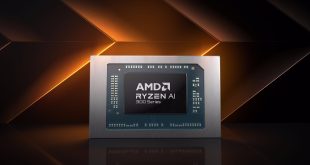Samsung Electronics this week responded to Nvidia Corp.’s allegations with its own lawsuit, where it accuses Nvidia and its partner Velocity Micro of infringing its patents. While the main reason why Samsung sued Velocity Micro, a well-known privately-held PC maker, is tactical, it should be noted that the charges which Samsung pressed against Velocity Micro are very similar to those, which Nvidia pressed against Samsung itself.
On Monday, Samsung filed a lawsuit against Nvidia Corp. and Velocity Micro in eastern district court of Virginia, USA. The company accused the chip designer and the boutique PC maker of infringing a number of its patents as well as of false advertisement. The accusations cover not only all products that Nvidia sells, including GeForce and Quadro graphics processors, Tesla high-performance computing accelerators and Tegra system-on-chips for consumer electronics, but also PCs that are sold by Velocity Micro. Samsung needed to sue Velocity Micro, which is based in Virginia, in order to keep the lawsuit in Virginia, which has a faster time to trial than most jurisdictions in the United States. However, it is interesting to look at Samsung’s accusations in more detail.

In total, Samsung accuses Nvidia and Velocity Micro of infringing eight of its patents. The patents cover various technologies and can be divided into several groups:
- Chip manufacturing. Two of the patents discussed in the lawsuit (6,287,902; 8,252,675) cover various aspects of modern chip production. Since Nvidia does not have its own fabs and does not manufacture its proces sors, how exactly the chips are made is beyond Nvidia’s control. Nonetheless, since Nvidia’s processors take advantage of Samsung’s intellectual property, the electronics conglomerate accused the chip designer of infringing its patents. Since Samsung has been producing integrated circuits since 1984, it has loads of semiconductor-related patents and can sue not only Nvidia, but also tens of other companies.
- Chip functionality. Three of the patents from the lawsuit (5,860,158; 6,262,938; 6,819,602) cover memory controllers, cache control units as well as data buffering. All modern processors use caches, data buffering and memory controllers, all of them essentially use intellectual property that belongs to Samsung (and tens of other chip developers).
- Personal computers. One of the patents that Velocity Micro allegedly infringes (5,777,854) covers cases of personal computers. Samsung got the patent from AST Research, which it acquired in 1996, and can potentially press charges against a wide range of desktop PC makers. Another patent (7,073,054) covers solid-state hybrid drives (SSHDs) – storage devices that contain both rotating media as well as NAND flash. Since Velocity Micro uses SSHDs, but does not pay royalties to Samsung, the latter believes that the former infringes its intellectual property. Finally, there is a patent (6,804,724) that covers graphics adapters and PCs supporting digital and analogue display interfaces (e.g., DVI, D-Sub, etc.). While both products are widespread these days, Samsung holds appropriate patents and can demand royalties for the invention.
Since Velocity Micro uses Nvidia’s graphics processing units and system-on-chips for its PCs and tablets, Samsung claims that it illegally uses its intellectual property and demands appropriate awards. In addition, Samsung accuses Velocity Micro of infringing its patent by using Seagate Technology’s solid-state hybrid drives without licensing underlying technology from the South Korea-based company first. While Samsung’s allegations against Velocity Micro seem rather wrong, they are very similar to charges that Nvidia pressed against Samsung by accusing it of infringing its patents by using graphics technologies developed by ARM and Imagination Technologies.

It is pretty obvious that Samsung accused Nvidia and Velocity Micro of infringing patents that cover fundamental technologies used in microprocessors, chip production and PC manufacturing. While the allegations may look unfair (it is impossible to build a chip without a memory controller, which, apparently, infringes Samsung’s patents), it should be noted that Nvidia sued Samsung and Qualcomm for infringing seven patents that cover basic aspects of graphics processing.
The patents discussed in Nvidia’s lawsuit against Samsung and Qualcomm cover fundamental things related to modern graphics processing, it is technically impossible not to infringe them if you build an SoC for mobile devices. One of the patents describes the GPU, which puts onto a single chip all the functions necessary to process graphics; another one describes programmable shading; the third one covers unified shaders, which allow every processing unit in the GPU to be used for different purposes; yet another one mentions multithreaded parallel processing in GPUs, which enables processing to occur concurrently on separate threads while accessing the same memory and other resources.
Throughout its history, Nvidia developed loads of graphics processing technologies and holds a ton of GPU-related patents. In general, the company can sue almost any SoC developer that uses graphics processing IP from its rivals (ARM, ImgTec, Vivante, etc.), including Apple, MediaTek, Rockchip, Samsung or Qualcomm. At the same time, Samsung – one of the largest companies in the world – can also sue multiple companies since its patents portfolio covers incredible amount of fundamental inventions. It is not surprising that Samsung decided to counter-sue Nvidia.
While it is sad to see Velocity Micro sued for infringing Samsung’s patents, it is pretty clear that all the charges against the company will be dropped after Samsung settles its legal disputes with Nvidia. Unfortunately, it is completely unclear when this might happen.
The minute Nvidia initiated a trial against one of the world’s largest conglomerates, it clearly understood all the consequences of this action and knew that Samsung would fill a lawsuit against it. But while Nvidia was prepared for a long legal battle with an unclear final, its partner Velocity Micro clearly is not.
Discuss on our Facebook page, HERE.
KitGuru Says: It is obvious that Nvidia knew exactly what it wanted when it sued Samsung Electronics back in September. It is impossible to believe that Nvidia hoped to sign a broad cross-licensing agreement with Samsung, but it did hope for something big, which is why it took the risk. Now, it will be interesting to see how Nvidia supports its partner Velocity Micro in its legal fight against Samsung. Other partners of the multimedia chip developer are watching this.
 KitGuru KitGuru.net – Tech News | Hardware News | Hardware Reviews | IOS | Mobile | Gaming | Graphics Cards
KitGuru KitGuru.net – Tech News | Hardware News | Hardware Reviews | IOS | Mobile | Gaming | Graphics Cards


